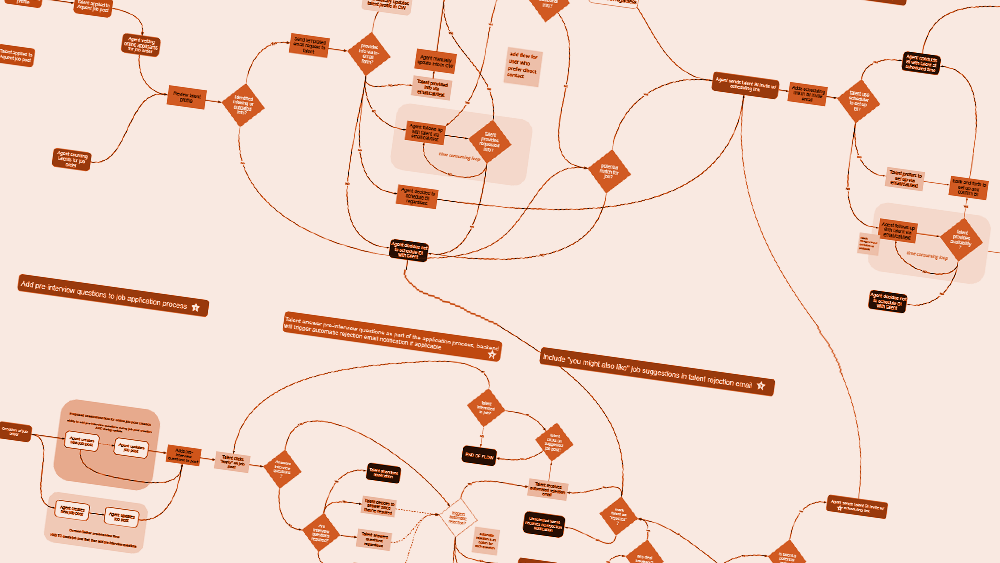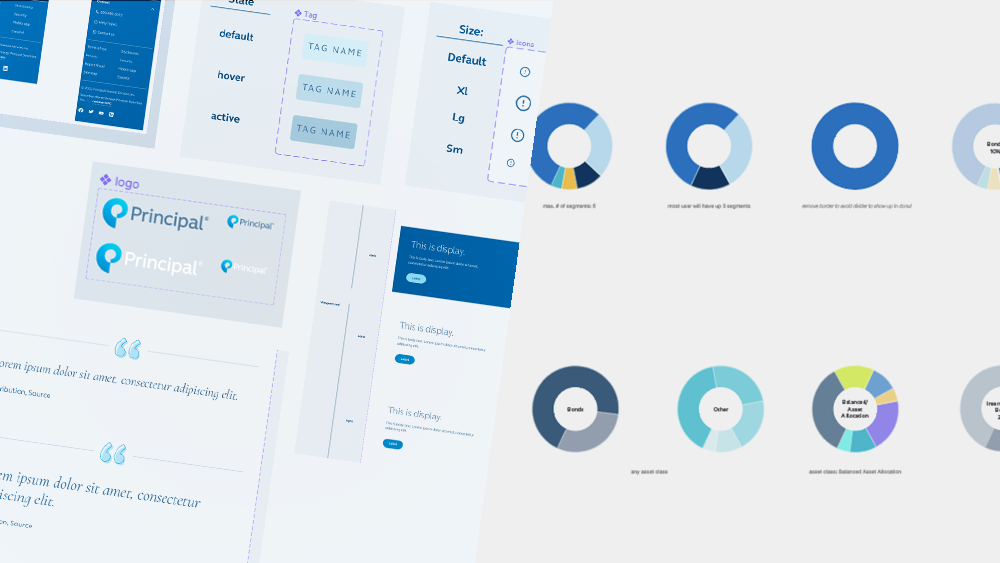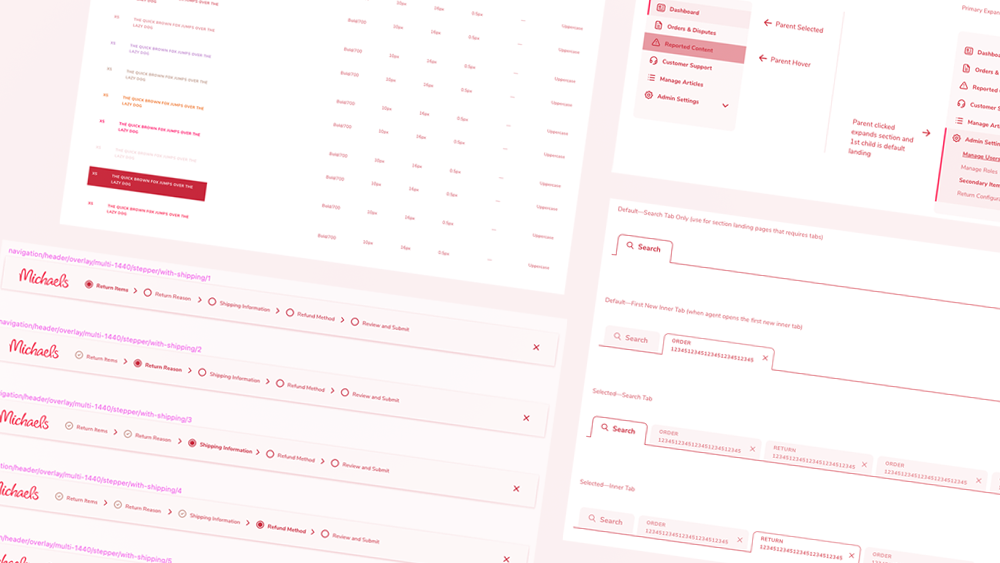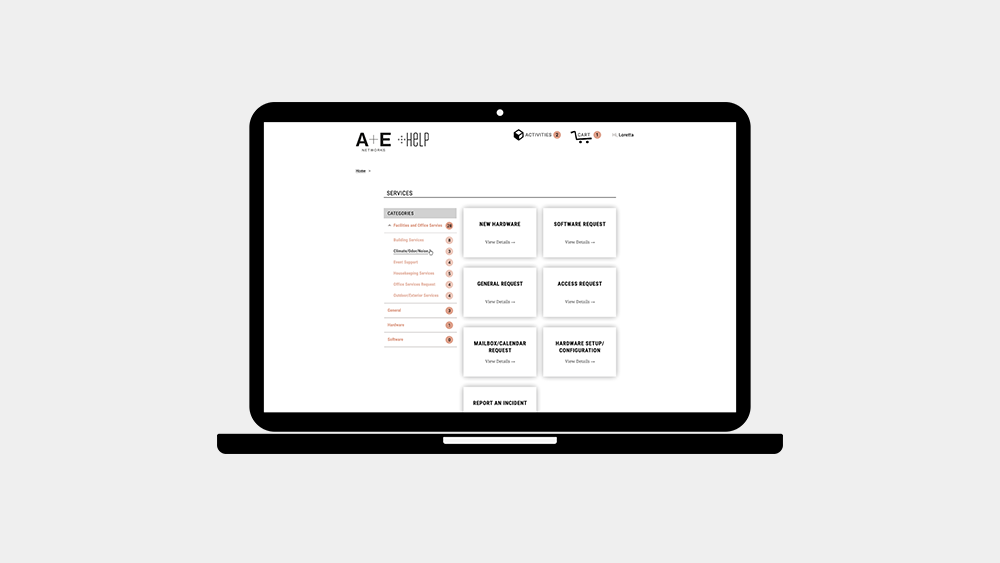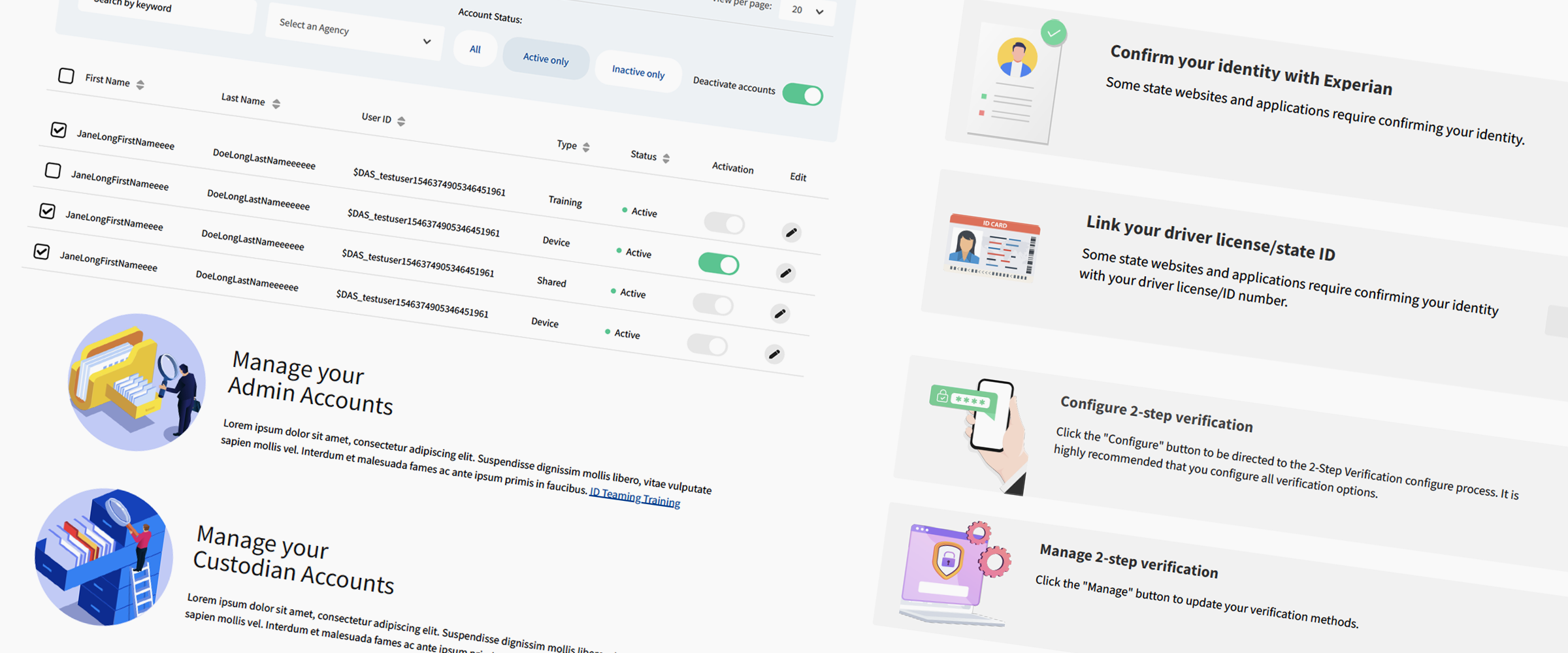
Overview — State of Ohio Service Design
At Deloitte, I led service design efforts for the State of Ohio account. We collaborated with multiple state agencies to modernize and streamline their public-facing digital experiences and enterprise workflows, improving both user experience and operational efficiency.
Leadership & Impact
I was responsible for leading the multifunctional service design team, engaging stakeholders, and managing end-to-end execution. Our cross-functional teams developed discovery and research strategies to identify experience gaps and address user needs, formed design hypotheses based on the findings, and validated those hypotheses prior to implementation. This significantly increased overall sign-up and adoption rates for the state’s digital services—such as single sign-on (SSO) across multiple agencies—resulting in a more seamless customer experience while enhancing the state’s operational efficiency. This laid the foundation for continued digital transformation across the state.
Multifunctional team
- Product design
- Change management
- Content
- Engineering
- User testing
Ecosystems
Challenge
New, on-going, and existing experiences are all candidates for SSO rollout and new design system consumption, and more agencies are expected to join the initiatives continuously. How best to distribute resource and minimize conflict of interest? What’s the most efficient and effective way to collaborate among agencies and departments?
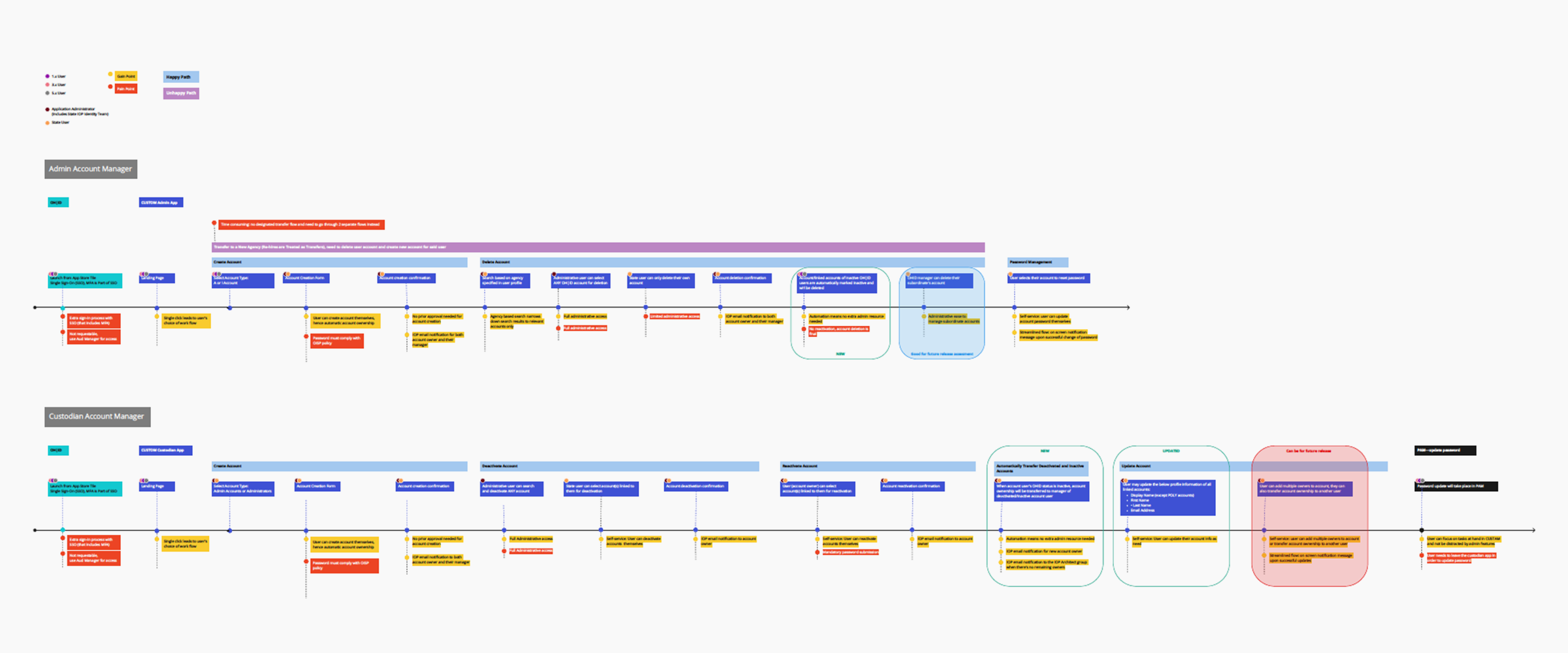
high-level user journey maps with modular experiences prioritized for iterative implementation
Solutions
Facilitated series of problem framing and design thinking workshops with State stakeholders, CX, UX, change management counterparts to put together high-level roadmap.
- co-created fluid and flexible high-level roadmap to accommodate ambiguities
- customer journey maps, back-end process flows, and reprioritization of business resources for holistic customer experience and product ecosystems
- facilitated workshops with individual agencies to validate their needs against the high-level roadmap and revise as needed
- pilot implementation for small group of agencies to validate, test processes & protocols, and correct any potential issues before implementing to larger ecosystem
- rolling implementation to ensure minimal service interruption

product user journey map with modular experiences, some shared with other products
Single-sign-on {SSO)
Challenges
The target audience is the residents of the entire state of Ohio and the State employees, which means the customer experience (CX) and design solutions needs to be universal and accommodating for the vast varieties of users. Change management is another crucial component for smooth transition for the existing users and to attract new Ohioans to sign up. Some experiences are embedded throughout the State ecosystem and might appear the same for the user, the fact that they are separate services or flows should not distract users from their tasks at hand
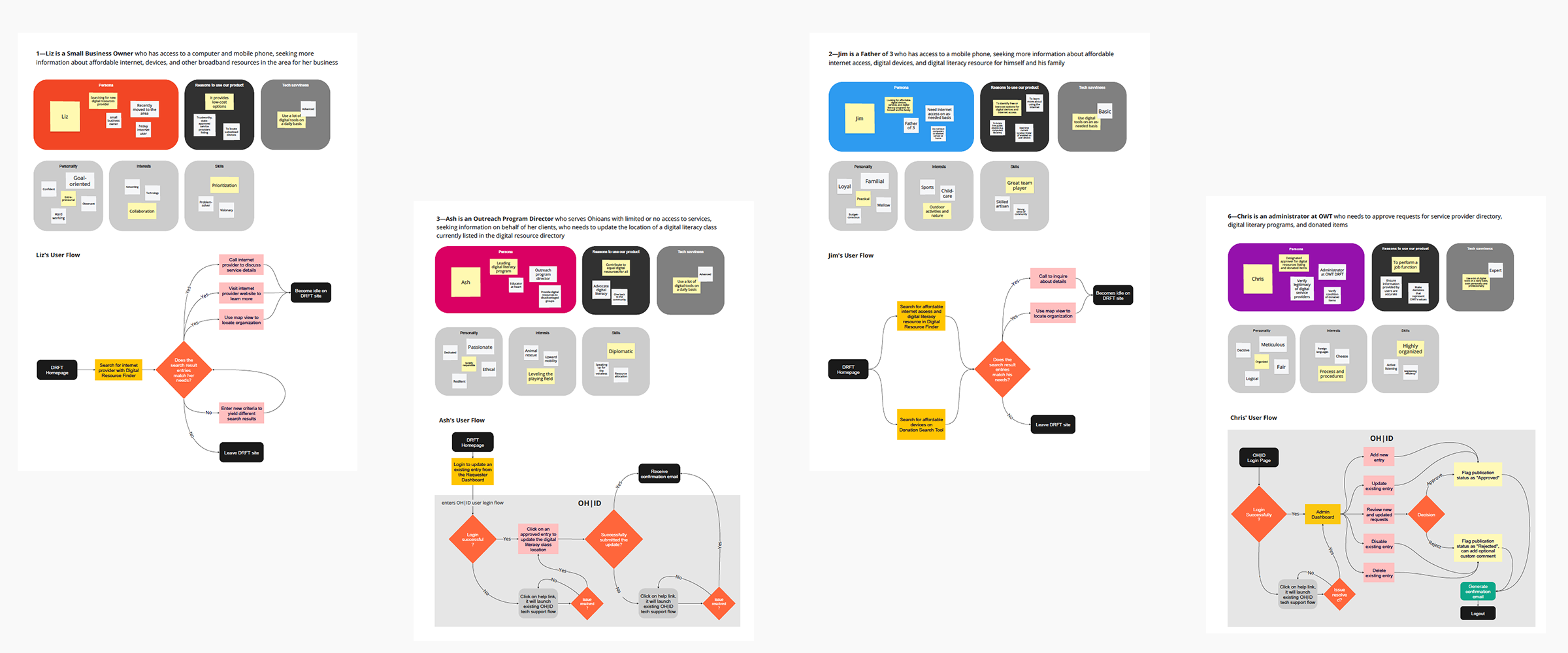
selected personas and associated user flows
Solutions
- wide-range of user personas to understand the users with various behaviors and digital literacy levels
- thorough user journey maps to cover as many scenarios as possible
- multiple focus groups and user testings to validate design hypotheses simultaneously
- centralized dashboard and standardized UX structure for multiple agencies and services to create seamless user experience
- provide elaborate self-serve troubleshoot options and resource to empower users
- automated mundane repeatable tasks to minimize human error, funneled live agent phone support resource for crucial cases only
- consolidated multiple agency knowledge bases into one source of truth, enabling State employees to quickly trouble-shoot when users reached out for crucial cases
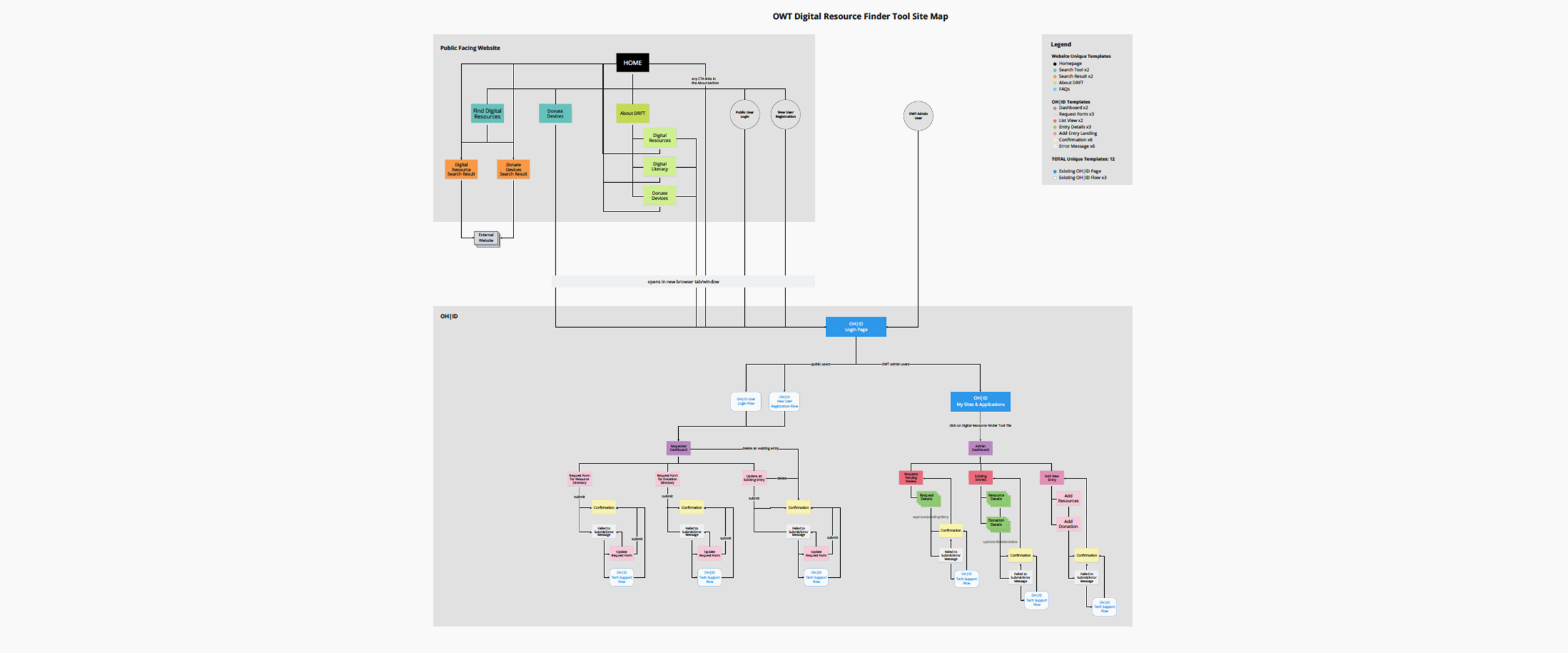
sitemap of a product that serves BOTH Ohioans and State employees
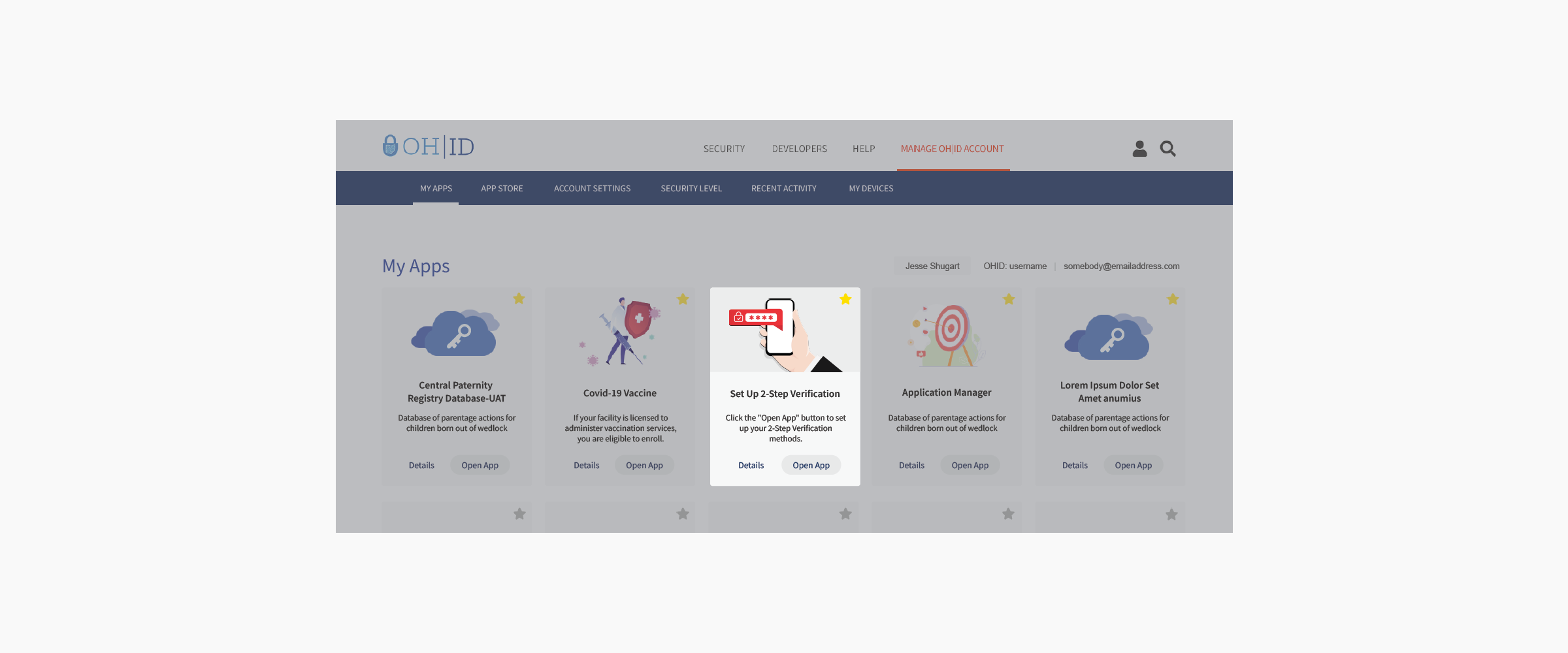
new apps dashboard
Design System
Challenges
The state launched a new expanded design system (DS) to ensure BOTH its existing and new user experiences are accessible and inclusiveness compliant. New UI needs arise when simultaneously working on multiple products with different timelines, another layer of complicity was the need to update the vast amount existing experiences to consume the new design system.
Solutions
- collaborated with the state UX counterpart to monitor and revise DS governance strategy to accommodate large amount of new contributions from various products
- reevaluated on-going initiatives for feasibility to switch to the new design system with an updated project plan or switch at a later iteration if updating the project plan wasn’t a viable option
- bundled and worked co-currently on products with similar UX UI needs to maximize resource and avoid redundant work
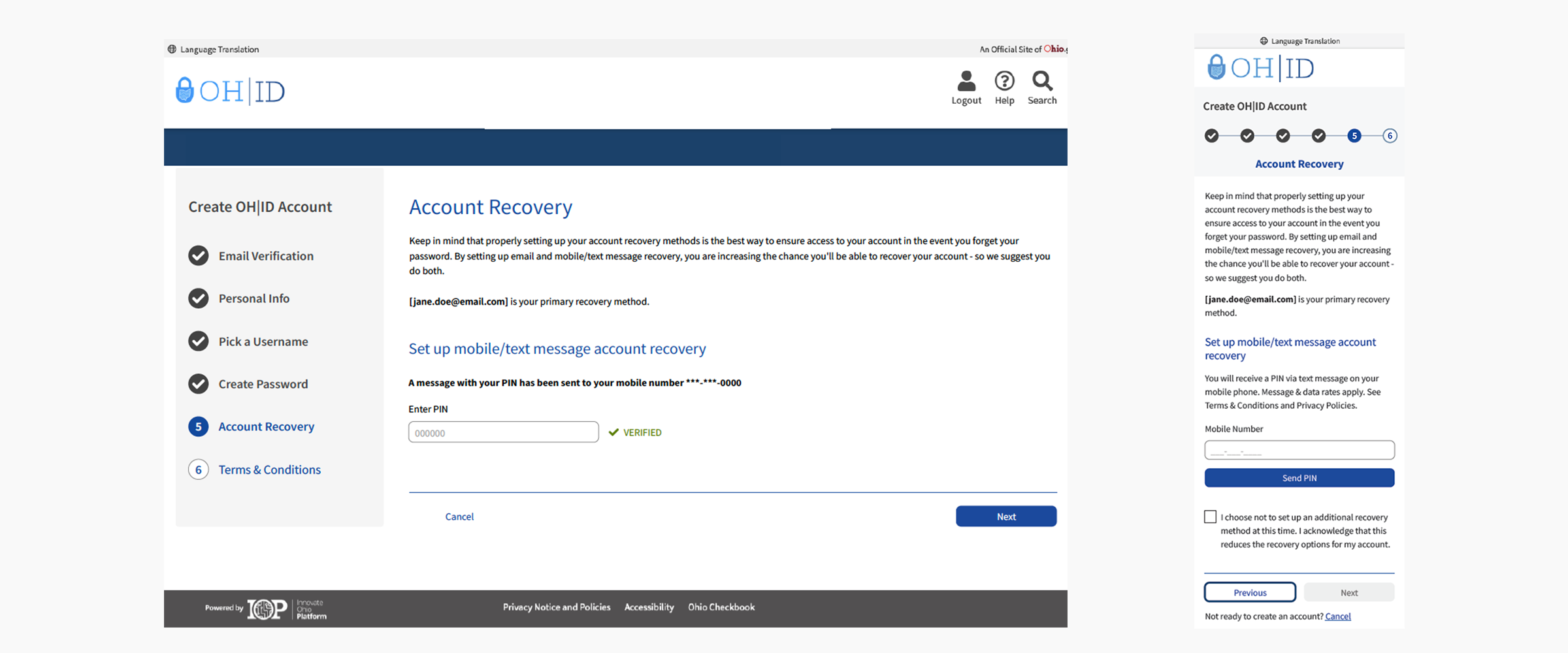
global step indicator in desktop and mobile for SSO experiences
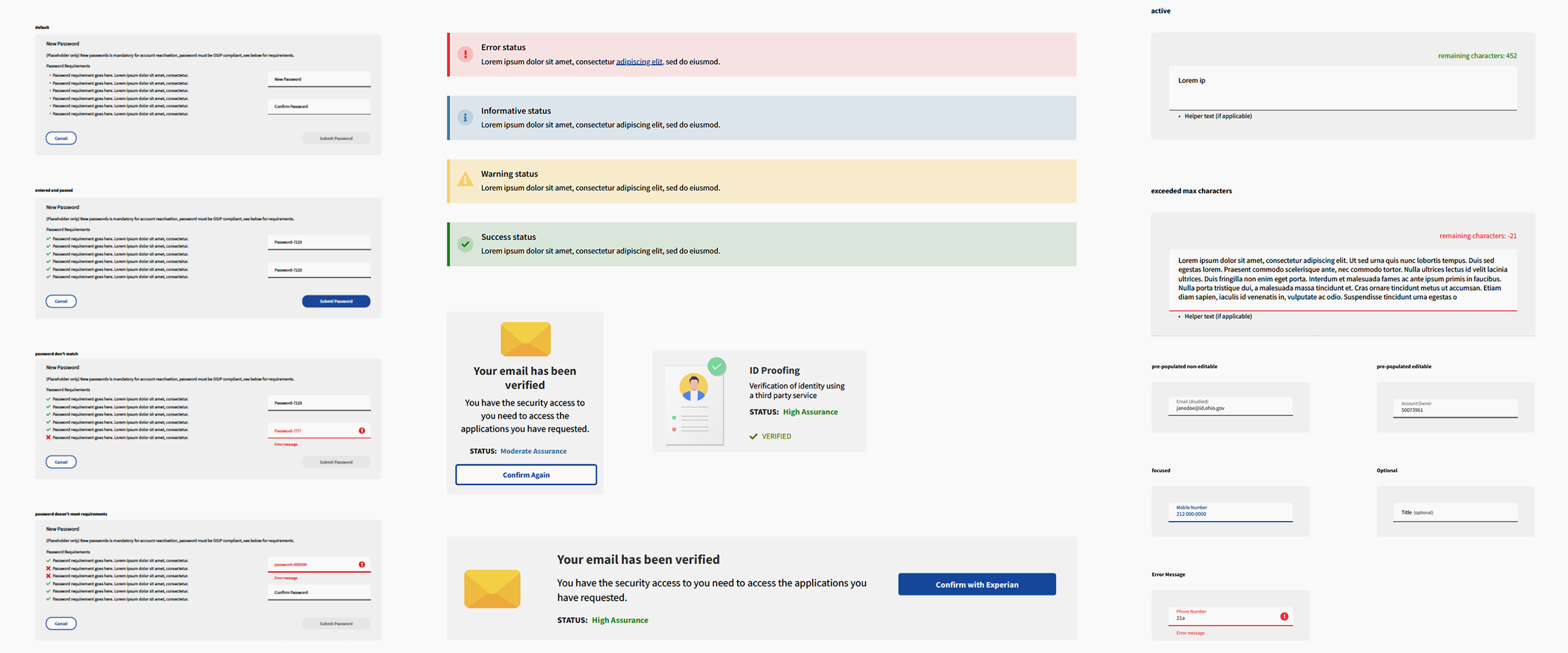
shared reusable components used in various State experiences

